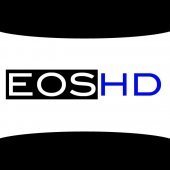Leaderboard
Popular Content
Showing content with the highest reputation on 12/31/2024 in all areas
-

Kodak Vision3 vs Sigma Fp-L RAW Cinema DNG
Katrikura and 2 others reacted to Andrew Reid for a topic
This guy has talent... This is shot on the Sony a1 and an RX100, and it's very nice. But then a funny thing happened... I discovered his Super 16mm stuff and liked it even better, although you have to appreciate it on a big screen for the texture, and not a phone. Film, being film has an imperfect nature. So more emotive. Now in the current digital camera landscape, full frame is king. And for a good reason. But what if you could have both Kodak Vision3 Super 16mm and full frame in one camera... Now, I considered the OM-1 as a Super 16mm 4K camera, because I very much liked the E-M1 Mark II since forever. The OM-1's OM-LOG however has a bit of a thin tonality, and is it a bit tricky to get looking right. Lovely ergonomics and EVF though. Now the Sony a1, has the resolution to do a 4K Super 16mm crop (close to, it's actually Micro Four Thirds at 2x-ish which is good enough for most c-mount lenses longer than 25mm like the Kern Switar 26mm F1.1, work of art that it is). The a1 I had but ended up selling to somebody far richer, because I feared it would depreciate from 5 grand to something like £1. This hasn't happened yet, as the new one is 7 grand. Anyway, sod Sony and their pricing... Doesn't shoot internal RAW anyway. Now N-RAW, BRAW, Canon RAW, I have tried them all, and to my eye at least they all look like H.265. There is just something so smooth and perfect about the modern faux RAW that it kinda defies the point, RAW should be raw and not processed. Those codecs are heavily processed and the file sizes are ridiculous. There's only one RAW format that has come close to FILM to me and that has always been Cinema DNG. Starting way back with the original BMCC and Ikonoskop, uncompressed 2K Cinema DNG. Following on from that the miracle of Magic Lantern RAW video, with the 5D II going from some very dodgy 1080p H264 to the best ever looking 1080p Cinema DNG RAW which still stands up today for tonality, grain, texture, micro contrast, motion cadence and colour... you know, all that stuff which gets chucked away in N-RAW! Then the 5D Mark III upped the ante to 3.5K RAW eventually, at 24fps in 10bit. The drop to 10bit didn't hurt it much. A little noisier in the shadows, but worth it for the huge resolution bump from a 1:1 sensor readout, which did away with the moire or aliasing without the need for a Mosaic Engineering AA filter. Then the Sigma Fp came along, but the first model has two drawbacks. The first is that it doesn't have the resolution for Super 16mm crop in 4K. The second is that the 4K RAW appears to be binned. It's a bit funky looking. Now the Sigma Fp-L has a 9K sensor instead... a whopping 60 megapixel. But I have not used it much... the reason being, I haven't quite found a lens that really suits it... Then I thought, well it has the best crop modes of any camera, and stays in those modes when you cycle the power or switch between stills and cine... Perfect for C-mount, Super 16mm stuff? It has a nice oversampling in these modes, from 1.3x crop to 2x... Sampling upwards of 7K down to 4.8K, which makes for some very finely textured UHD Cinema DNG footage, superior indeed to that of the first model. (It also adds into the mix phase-detect AF but it doesn't work very well) Now the Fp-L I thought could work well with my C-mount stuff and indeed, it fucking does. But I also think of adding a Panasonic OIS lens to the mix, for handheld run and gun Cinema DNG. So the 28-200mm looks attractive and yes, slow aperture but it's absolutely tiny. This tiny-ness is very important for the Fp-L, as it feels naff with big heavy lenses. And the Fp-L is very good in low light, because the sensor is enormous - the high megapixel count doesn't really hurt it, same with the Sony a1. The 28-200mm also adds OIS... the all-important missing stabilisation on a non-IBIS camera. So I think I have found the best full frame proper RAW camera that is best able to emulate the look of proper Super 16mm film and work with c-mount lenses, and offers you a full-frame walk-round zoom camera as well... And that means best of both worlds in one small affordable tool. Pop a 28mm F1.4 on there and it will also do a very good Leica Q3 impression. We may moan about the lack of IBIS and LOG, but then a Bolex doesn't have these either. And just think about the absolute massive pain it is to shoot with a Bolex and the expense you save going with a trusty Fp-L! Food for thought. .... The 8bit Cinema DNG to SD card is actually really good BTW3 points -

Accurate Color From Color Negative Film Tutorial - No Plugins
ntblowz reacted to Alchemy Color for a topic
Hello everyone, I've invested months in making this free tutorial on how to achieve the best possible quality from color negative scans made at home with a digital camera without using plugins. https://github.com/alchemy-color/color-negative-inversion Based on my previous work with digital camera calibration and emulation, I decided to dive into negative film with a mission in mind: - What could be the most accurate way of capturing and inverting the color negative in the digital domain with simple means such as a DSLR and an iPad backlight? After extensive measurements and intensive testing, I developed a method that allowed me to scan and invert a Kodak Gold 200 photograph of a ColorChecker SG with a resulting average color similarity DeltaE of around 2.70. This exceptional value serves as a testament not only to the accuracy of the method but also to the virtues of color negative film in terms of its color accuracy. Thank you to Reddit users Aaron Buchler (u/Ab_film_92) for the inversion technique and Jack Whitaker (u/jrw01) for his informative article on scanner backlights. Both were fundamental in helping me understand where to go with my methods. Full disclaimer: Close to the end of the video, I promote a product created alongside this research. https://alchemycolor.com/film-emulation/. Color negative emulation is an innovative method if turning digital images into accurate facsimiles of film negatives and ingesting them into plugins such as Negative Lab Pro or FilmLab. Looking forward to hearing opinions and seeing your results. Cheers1 point -
I think the E-M1 iii has most of what the E-M1X has (except the AF subject detect and the extra battery) in a smaller package (the used prices are similar, with the E-M1 iii being a bit higher). They are mostly sub-1000 GBP in the UK (and the latest v1.7 FW update improved the subject-detect AF performance quite noticeably). At that price it's a lot of camera for the money. I agree (and the official OMLog400 to Rec709 LUT seems to produce some weird colours - the reds in particular). In case they might be useful to someone using an OM-1, these are some 10-bit BT2020 OMLog400 to Rec709 LUTs (in nine combinations of colour tint and contrast curve) I've made for my own use: https://drive.google.com/open?id=1-HBUDlPN0C3pQRX5c9Trmh8I3aM9hbiz&usp=drive_fs I use Vegas Pro for editing (and generating the LUTs) - so no idea how well the LUTs might work in Resolve etc. (and I rarely shot video where people are the main subject, so skin tone accuracy generally isn't important to me) (...and a big thank you to @Attila Bakos for the great free LUT tools on his Colorizer website )1 point
-

Kodak Vision3 vs Sigma Fp-L RAW Cinema DNG
zlfan reacted to Andrew Reid for a topic
I think the usual gear rationale applies more to the Sony, Canon, Panasonic stuff. The Sigma Fp-L stands apart as a different thing. Cinema DNG is proper raw and has been removed from Blackmagic's line, and is a non-manufacturer addition on the Canon DSLRs which leads to some usability issues shall we say. Not for one moment a criticism of Magic Lantern RAW, but the Fp-L does Cinema DNG officially, reliably, in 4K and without the flappy mirror. Had the Fp-L tried to be a Sony replacement for work, of course it would fail. It lacks the best in class autofocus, IBIS, mech shutter, the screen is fixed and the EVF is a clunky add-on. But in my opinion it ain't trying, it's an art-cam. S9 is undoubtedly a bit more convenient - flippy screen and IBIS, but it doesn't have the resolution, proper internal RAW or 60 megapixel sensor that the Fp-L gives us. I remember shooting with the Digital Bolex and preferred to move it handheld because of the motion cadence, global shutter, something about the CCD, it looked great without any stabilisation. It is similar with the Fp-L as long as you dial in the 180 deg shutter. Overall I preferred that Bolex handheld look to a smooth modern H265 codec with IBIS handheld. I haven't quite decided what factor the global shutter played in that, but there was something so cinematic about it that you didn't need the usual IBIS / AF crutches with it... Very strange, and hard to describe why. The aim is to do the same with the Fp-L... Super 16mm with a pistol grip and no stabilisation. Add some halation in post with Film Convert and you basically have a film camera that uses SD cards. I also realised something else with the Fp-L, I don't really like LOG. I don't like shooting it with a crappy gamma assist and don't like grading it much. With Cinema DNG the grading is much more enjoyable, it pops from the offset and saves you hours of fiddling about. With it being proper RAW and completely debayered off-camera, the colour is so good... 8bit doesn't hurt it, it only means you have to get your exposure right first time out. Then again, if you have to lift your shadows 5ev in post one did something very wrong in the first place, lighting and exposure wise, and a high dynamic range final cut is always at the expense of colour, contrast tonality. The only drawback really is the slightly high rolling shutter, rather than the lack of IBIS or class leading AF (it's phase-detect, same sensor as a7r V but the autofocus processor is more simple).1 point -
Reality for me...and I guess many folks is yes, FP-L trumps it for outright image quality, but S9 beats it pretty much everywhere else from having IBIS plus tilt screen, battery life and a few other areas. But then for me, S5II beats S9 everywhere except some features specific to S9 that may come in firmware. Conclusion = LUMIX is for me, still the mainstream hybrid brand for pure video needs and has the least number of compromises over everyone else. What is their compromise? Outright image quality possibly...but actually, struggling really to find one... Another conclusion and that is LUMIX should work more closely with Sigma to create the ultimate real world hybrid!1 point
-
Accurate Color From Color Negative Film Tutorial - No Plugins
Alchemy Color reacted to Chrille for a topic
Wow, thank you!1 point

